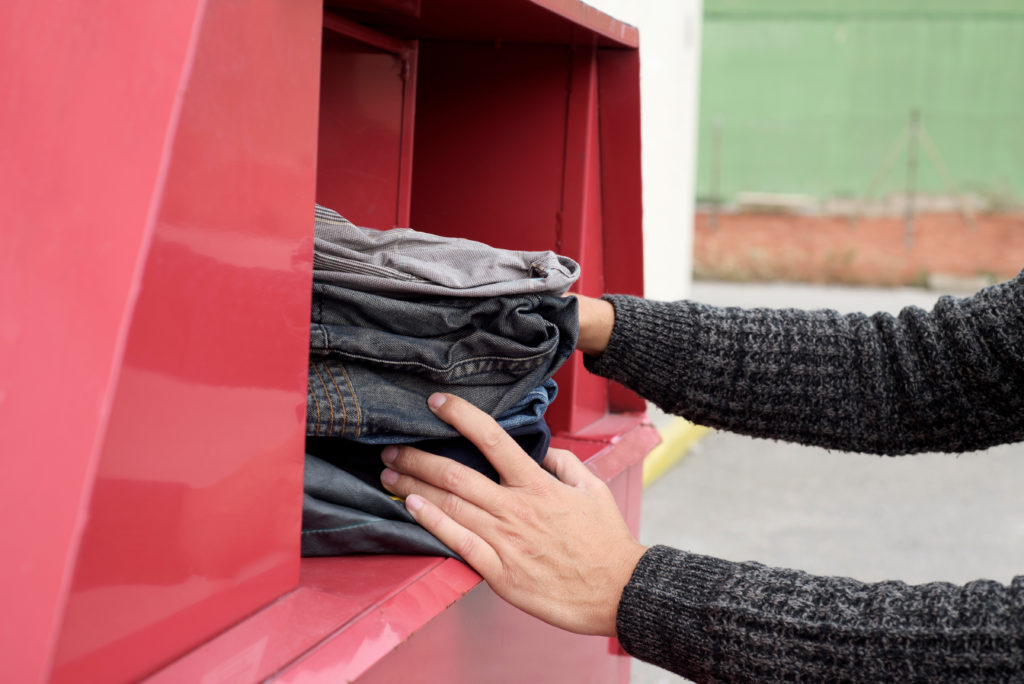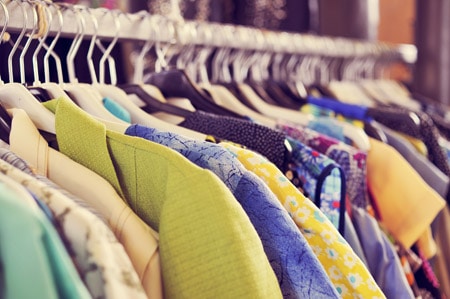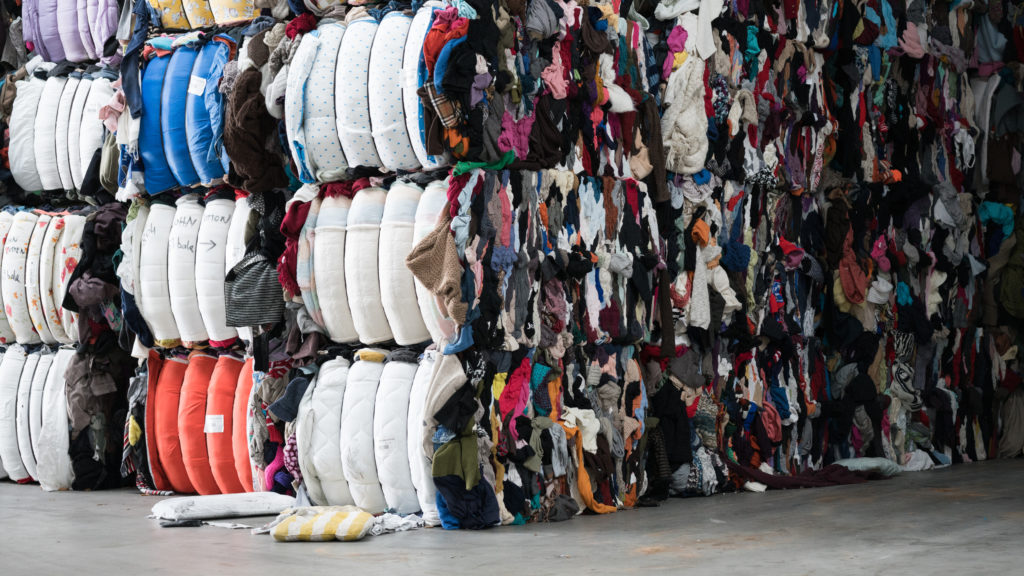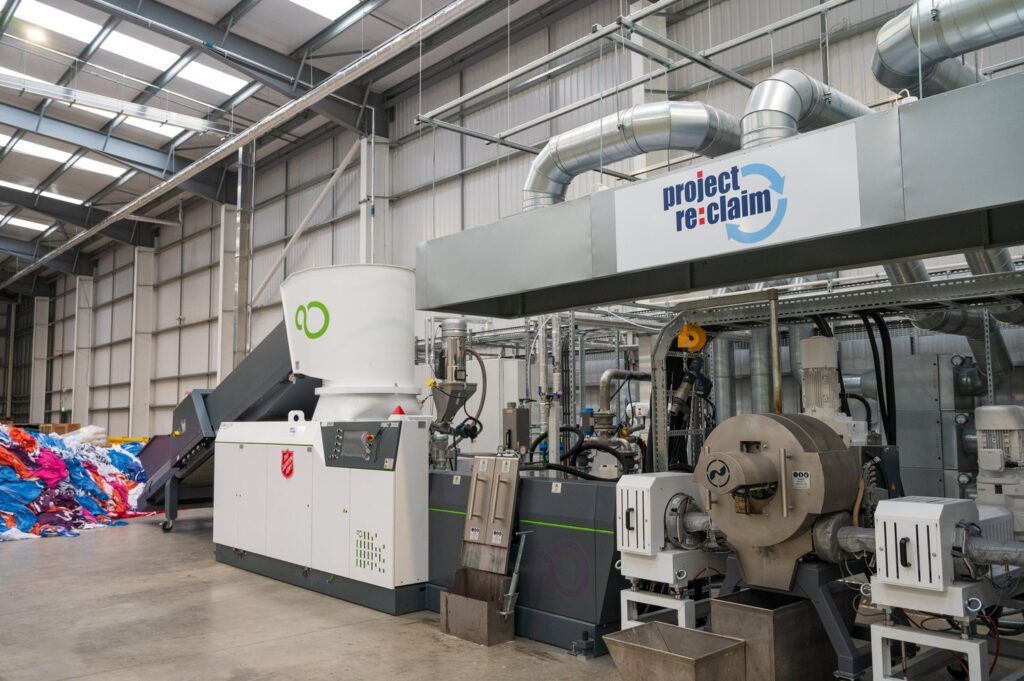The study, which took place over eight non-consecutive weeks between November 2020 and May 2021, analysed 10,860 kg of used textiles from the kerbside, household waste and recycling centres (HWRCs) and bring-back sites.
The findings were published last week (15 December) and showed that that the proportion of clothing material deemed to be of re-use grade was just 46.4% at the kerbside, compared to 50.3% at HWRCs.
This rose to 54.6% and 59% when shoes are included.
In the absence of a large-scale fibre-to-fibre recycling solution for textiles, the vast majority of used textiles are sent abroad to markets such as Africa and Eastern Europe to be sold on markets. Clothes not able to be reworn can be used for wipers or car seating.
The study comes as local authorities could have to rollout a form of “separate collections of textiles”, as this was stipulated in the EU’s Circular Economy Package 2018, of which the UK is a signatory. This does not necessarily have to be at the kerbside, however, and exact details remain unclear.
Difficulties
WRAP Cymru explained that the work was undertaken after difficulties arose within the textiles reprocessing market, including a glut of poor-quality clothing and “unprecedented” contamination levels. Some Welsh local authorities have lost their kerbside textile collection contracts as a result, WRAP Cymru said.
In 2019, JMP Wilcox and a string of others also stopped collecting kerbside textiles, with councils across the South West hit (see letsrecycle.com story).
The project aimed to build an understanding of textile composition across different collection methods, assessing representative samples against a number of pre-defined categories of interest. WRAP Cymru highlighted that material quality and reusability were “of particular interest”.
Project
The analysis was carried out by environmental consultancy Resource Futures, which conducted a composition analysis of used textiles collected from the kerbside and HWRCs from five Welsh local authorities.

These were Cardiff council, Conwy county borough council, Merthyr Tydfil county borough council, Newport city council and Torfaen county borough council, with North-Welsh reuse charity Crest Co-operative and textile collectors Salvation Army Trading Company Ltd (SATCoL) and LMB Textiles as partners.
Method
WRAP Cymru outlined that a total of 38 samples were identified across the selected local authorities.
Resource Futures analysed samples of textiles from the kerbside and HWRCs as well as bring bank textiles collected via the councils’ standard method, WRAP Cymru continued.
The samples were hand sorted according to the defined category list and in accordance with the Zero Waste Scotland (ZWS) guidance from 2015, titled ‘Methodology for Waste Composition Analysis’.
Findings
The analysis found that the kerbside textile collection produced the lowest quality items, “although not that much lower than HWRCs”. The samples of textiles collected from the kerbside contained the highest proportion of non-target items (27.6%, compared to 18.2% at the HWRC), a large portion of which items which were wet, dirty or damaged (12.1%), the report added.
Moreover, the textiles collected from the HWRC banks were less contaminated than those from the kerbside, containing fewer non-target items (18.2%), the document continued.
The bring bank samples had the highest proportion of re-use grade clothing and shoes at 75.3% and the kerbside had the lowest at 54.6% (with shoes included), the report continued.
The document noted that “it is unclear” how much of the difference in quality is due to the collection method and how much is due to the resident behaviour and perception of the service “as a ‘waste’ service”.
Recommendations
The report then recommended further research is carried out on the impact of collection and containment methods on the quality of kerbside collected textiles. If the collection methodology is reducing the quality of collected material, “it may need to be reconsidered”, the document reasoned.
It also suggested an additional analysis of bring bank material “to deepen understanding of the difference in composition and quality when compared with HWRC and kerbside collected used textiles”. Lastly, it proposed a composition analysis of the textiles within the residual stream “to determine their reuse potential and inform diversion targets”.












Subscribe for free